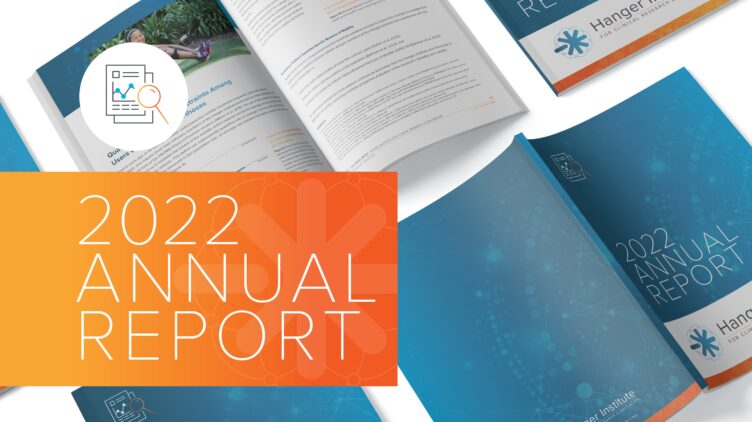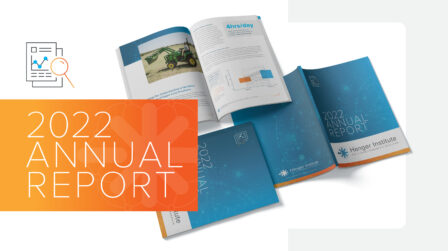The Hanger Institute for Clinical Research & Education Issues Its First Annual Report Highlighting Efforts to Advance Orthotic and Prosthetic Care

Translating knowledge to the broader rehabilitation community and disseminating results are key components that define clinical research. Made possible by strategic collaboration and partnerships with a wide range of academic and clinical institutions, we are pleased to share the 2022 Hanger Institute for Clinical Research & Education’s Annual Report.
Hanger Institute Annual Report
With collaboration, research, and education at the center of the Hanger Institute, our commitment to science and patient outcomes has never been stronger.

I am delighted to introduce and share the Hanger Institute for Clinical Research and Education Annual Report. Embedded within Clinical and Scientific Affairs, the mission of the Hanger Institute is to explore, expand, and facilitate opportunities that advance science and care in orthotics and prosthetics. This report reflects the efforts that we are making to advance and provide evidence-based care.
James H. Campbell, PhDSenior Vice President and Chief Clinical Officer
Highlights include:
- MAAT Series: With seven separate landmark studies that represent one of the largest multicenter retrospective analyses of mobility among users of lower limb prostheses, this series seeks to clarify the concept of prosthetic mobility as it relates to such considerations as satisfaction, quality of life, comorbid health conditions, and prosthetic component choices.
- OASIS Series: This series compares the effectiveness of a variety of orthotic and prosthetic components across different patient groups to ultimately impact and enhance patient outcomes.
- Resilience of Prosthetic Mobility and Well-Being Following Amputation as a Result of Diabetes: We take a special interest in individuals who undergo amputation due to diabetes/dysvascular disease and further review disparities in the incidence of amputation following diabetic foot ulceration, resilience of prosthetic mobility and well-being following diabetic amputation, and mobility trends by age, amputation level, and etiology.
- Understanding the Impacts of Different Prosthetic Components: We recently completed various clinical studies asserting that foot design is a meaningful consideration for lower limb prosthesis users and future patient protocols. Study highlights include how shock absorbing feet are consistently associated with enhanced prosthetic mobility, irrespective of whether this biomechanical behavior is the result of a distinct mechanical device or the manipulation of material science and design geometry, and that microprocessor feet appear to facilitate meaningful improvements in physical function, especially with respect to transfers and the navigation of environmental obstacles.
- Enhance Our Understanding of Well-Being Among Users of Upper Limb Prostheses: Well-being is a complex construct for individuals who have undergone upper limb amputation as it is affected by a range of considerations. Recognizing the importance of assessing bimanual activities among users of upper limb prostheses, the Hanger Institute validated a custom questionnaire resulting in the Patient-Reported Outcomes Measurement Information System (PROMIS) Measure of Upper Limb Physical Function to quantify improvements associated with a new prosthesis.
- Understand and Quantify Mobility Constraints Among Users of Lower Limb Orthoses: Analysis of lower limb orthosis users found receipt of a first or replacement ankle-foot orthosis (AFO) was associated with a significant increase in physical function as measured by the custom short form from the PROMIS Physical Function. Efforts continue to develop a measurement tool that would be sensitive enough to detect the changes in mobility that might accompany a transition between orthosis designs.
More Published Research
Review additional studies conducted by the Hanger Institute for Clinical Research and Education, in collaboration with leading researchers, clinical, and academic institutions.
Latest Updates
Subscribe to stay up-to-date on our latest posts.


